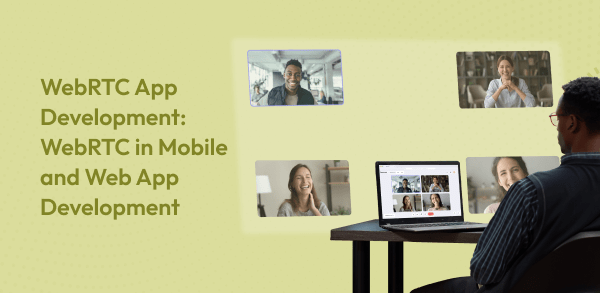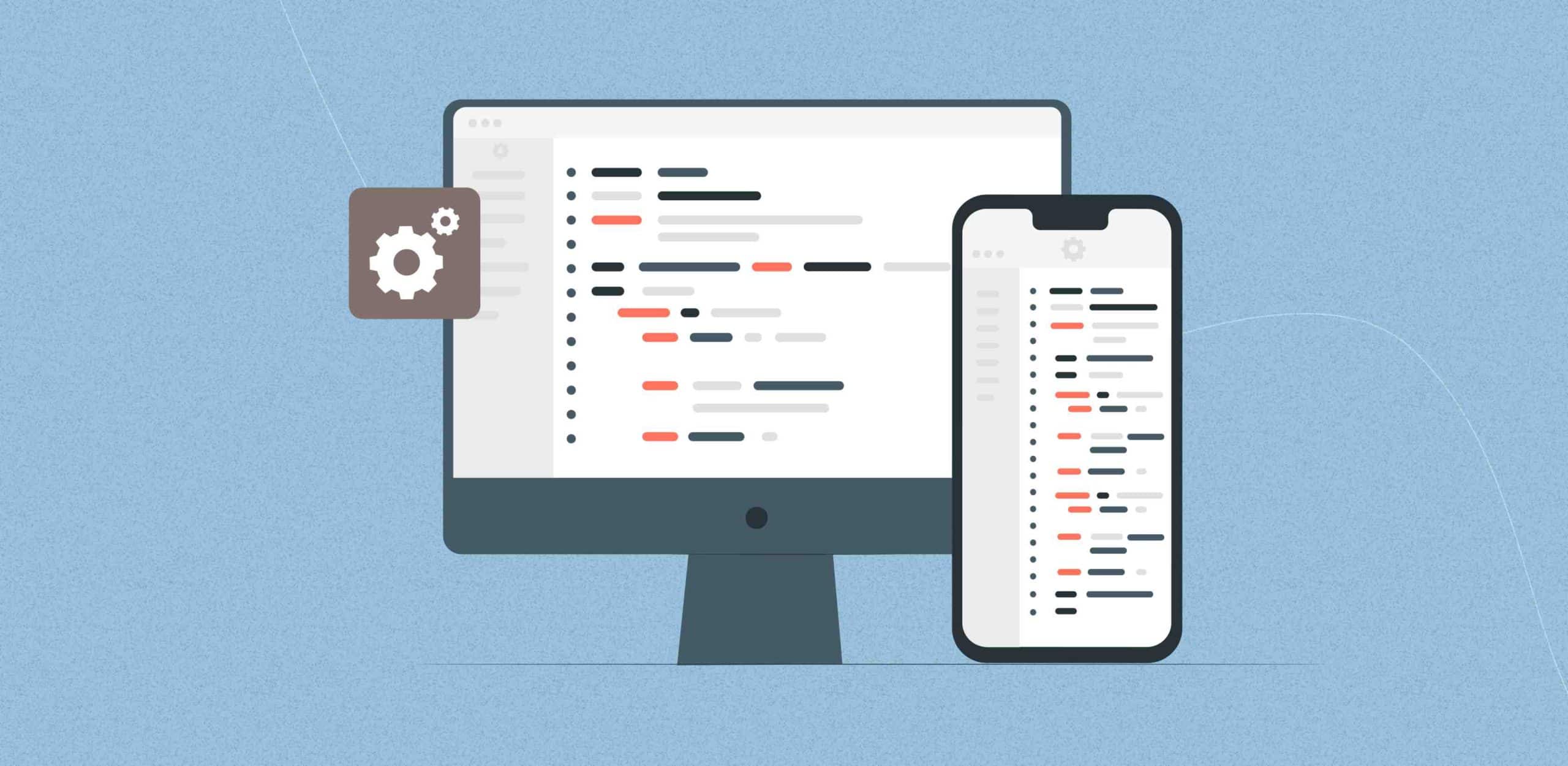What are the benefits of WebRTC?
One of the main benefits of WebRTC is that it allows for real-time communication without the need for plug-ins or additional software. This makes it easy for users to access the communication features of an app, as they do not have to download or install anything. WebRTC also allows for peer-to-peer communication, which means that the data is transferred directly between users rather than through a central server. This can help to reduce latency and improve the quality of communication.
Another advantage of WebRTC is that it is open-source and free to use. This makes it a cost-effective option for developers and allows for a wide range of customization. WebRTC is also supported by most modern browsers, including Chrome, Firefox, Safari, and Edge, which makes it accessible to a large user base.
Ready to take your app to the next level with WebRTC app development?
Join the innovation in app development with WebRTC.
Use Cases for WebRTC
WebRTC has a wide range of use cases, including:
Video and voice call: WebRTC makes it possible for web applications to support video and voice calls, as well as file sharing, directly in the browser, using simple APIs. This allows developers to build rich, interactive communication experiences within web applications, such as video conferencing tools, voice-over-IP (VoIP) applications, and more.
WebRTC uses a set of standards and protocols, including the RTCPeerConnection API, to establish and maintain a secure connection between two or more devices. It also includes support for audio and video codecs, which enables high-quality audio and video communication even over low-bandwidth connections.
Overall, WebRTC provides a powerful and flexible platform for building real-time communication applications on the web and has become a key technology for many applications that require high-quality audio and video communication.
Messaging: WebRTC (Web Real-Time Communication) is a technology that enables real-time communication over the web, allowing users to communicate via voice, video, and data without the need for additional software or plugins. In the context of messaging, WebRTC can be used to enable voice and video calls within messaging applications, allowing users to communicate more effectively and efficiently. This is particularly useful for messaging applications that are used for business or professional purposes, as it allows users to have face-to-face conversations without the need for expensive or complicated software. WebRTC is also useful for personal messaging applications, as it allows users to communicate more naturally and easily with friends and family. Overall, the use of WebRTC in messaging applications has greatly enhanced the user experience and made communication more convenient and efficient.
File sharing: WebRTC (Web Real-Time Communication) is a technology that enables real-time communication and file sharing over the internet. It allows for peer-to-peer connections between devices without the need for any additional plugins or software.
One use case of WebRTC in file sharing is for online collaboration. For example, a group of coworkers can use WebRTC to share documents and collaborate on projects in real-time. They can edit and save changes to the document, and all team members will have access to the updated version instantly. This eliminates the need for emailing back and forth or using a separate file-sharing platform, which can save time and improve productivity.
WebRTC can also be used for file sharing in online meetings and video conferences. Participants can easily share documents, presentations, and other materials with each other without having to leave the conference. This can make meetings more efficient and allow for more seamless collaboration.
Overall, WebRTC is a powerful tool for file sharing that enables real-time communication and collaboration over the internet.
Online education: WebRTC (Web Real-Time Communication) is a technology that allows for real-time communication and data transfer via the web. In the context of online education, WebRTC can be used for a variety of purposes, including:
- Video conferencing: WebRTC allows students and teachers to communicate face-to-face through video calls, which can be especially useful in a virtual classroom setting.
- Collaborative work: WebRTC can enable students to work together on group projects in real-time, even if they are located in different parts of the world.
- Interactive presentations: Teachers can use WebRTC to deliver interactive presentations, where students can ask questions and engage in discussions in real-time.
- Virtual office hours: WebRTC can be used to provide virtual office hours, where students can meet with their professors one-on-one to discuss course material and ask questions.
Overall, WebRTC can greatly enhance the online learning experience by allowing for real-time communication and collaboration between students and teachers.
Healthcare: WebRTC, or Web Real-Time Communication, is a technology that allows for real-time audio and video communication over the internet. In the healthcare industry, WebRTC can be used in a number of ways to improve patient care and communication.
One use case for WebRTC in healthcare is telemedicine, which allows patients to have virtual consultations with their healthcare providers from the comfort of their own homes. This can be especially useful for individuals who live in remote areas or have mobility issues that make it difficult for them to physically visit a healthcare facility.
WebRTC can also be used for remote patient monitoring, allowing healthcare providers to remotely monitor the vital signs and other health indicators of patients who are recovering from surgery or living with chronic conditions. This can help to identify potential problems early on and allow for timely interventions to prevent complications.
In addition, WebRTC can be used for real-time collaboration between healthcare professionals, allowing them to discuss patient cases and treatment plans in real-time, regardless of their physical location. This can help to improve the quality of patient care and ensure that patients are receiving the best possible treatment.
Overall, WebRTC has the potential to significantly improve the delivery of healthcare and increase the accessibility of medical care for patients around the world.
Conclusion
WebRTC is supported by most modern browsers, including Chrome, Firefox, and Safari, making it easy for developers to build apps that work across a wide range of devices. It is also compatible with both web and mobile platforms, making it a versatile technology for app development.
Overall, WebRTC is a powerful tool for developers looking to create engaging and interactive apps. Whether you are building a mobile or web app, WebRTC can help you create a seamless and real-time experience for your users.
Contact us today to learn more about how WebRTC app development can benefit your business!
Let’s transform your business for a change that matters.
F. A. Q.
Do you have additional questions?
WebRTC is a technology that allows for real-time audio and video communication over the internet.
WebRTC can be used in a variety of ways in mobile and web app development, including enabling real-time communication within apps, such as video conferencing or voice calling, and integrating with other communication technologies, such as SMS or email.
Some benefits of using WebRTC in app development include low latency, high-quality audio and video, and the ability to work across different devices and platforms.
One challenge of using WebRTC in app development is the need to ensure that the app has a strong internet connection in order for the real-time communication to work effectively. In addition, there may be compatibility issues with some older devices or browsers.
Yes, WebRTC can be used in both native and hybrid mobile apps. In native apps, WebRTC can be integrated directly into the app’s code, while in hybrid apps, WebRTC can be accessed through a webview component.
WebRTC is a relatively new technology that offers many benefits, including low latency and high-quality audio and video. However, it may not be the best option for all scenarios, and developers may need to consider other technologies, such as WebSockets or SIP, depending on the specific needs of their app














